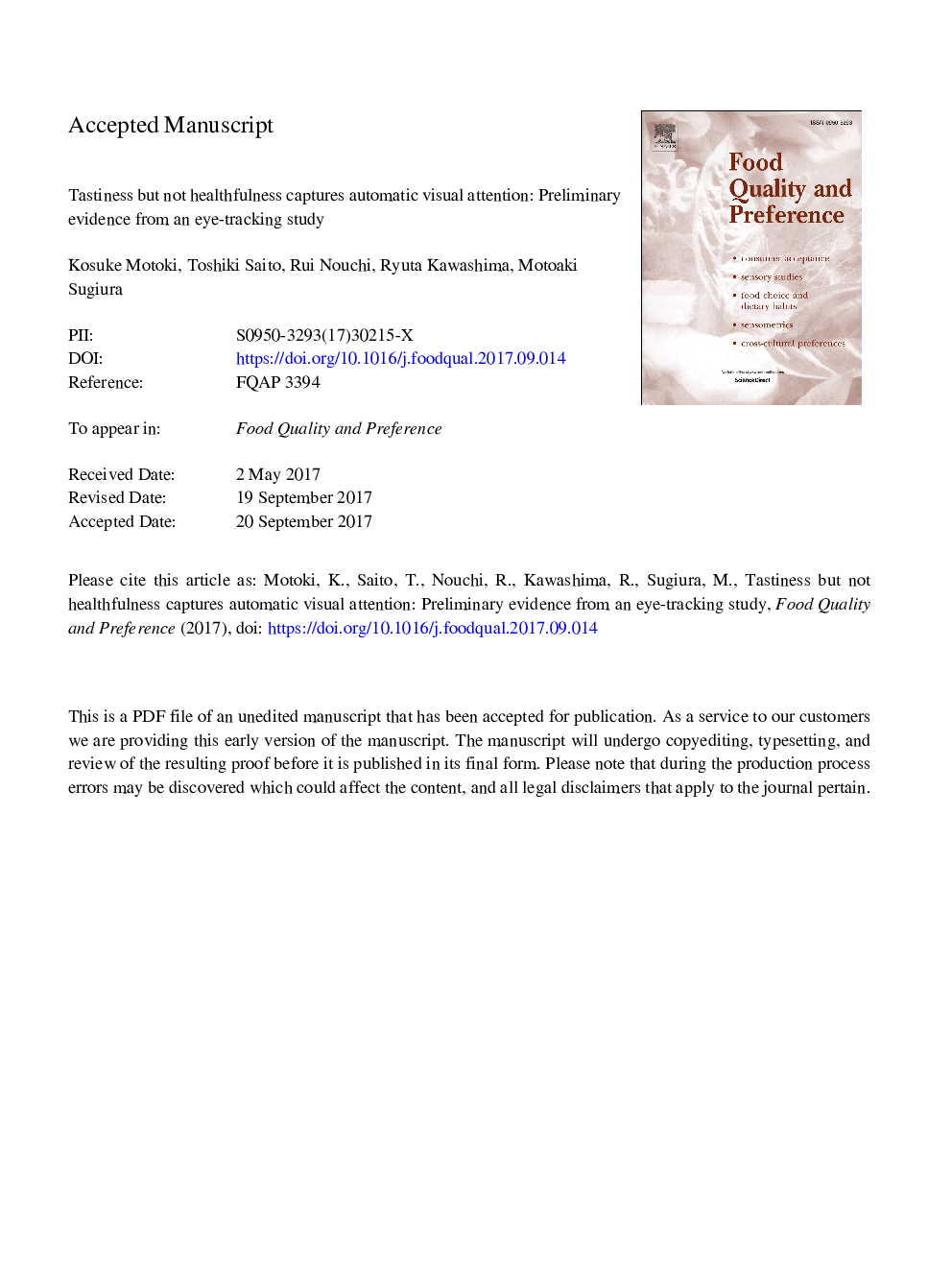| Article ID | Journal | Published Year | Pages | File Type |
|---|---|---|---|---|
| 8838582 | Food Quality and Preference | 2018 | 17 Pages |
Abstract
Visual attention can be automatically captured. From an evolutionary perspective, automatic attention can be useful for rapidly detecting salient stimuli, such as foods. Two attributes of foods (tastiness and healthfulness) are needed for survival. Moreover, these two attributes have different characteristics possibly associated with automatic visual attention. The more basic and hedonic attributes of tastiness are processed earlier than those of healthfulness during elaborative food choices. However, it remains unknown how the two attributes (tastiness and healthfulness) automatically capture visual attention. To this end, we investigated the extent to which taste- and health-related food information influences automatic visual attention using eye-tracking. Thirty-seven participants engaged in the target-distractor paradigm where four images were presented (top/bottom for houses as the target, left/right for foods as the distractor). Participants indicated whether the presented targets (houses) were the same or not. Visual attention toward foods would be automatic because the participants did not have to attend to them. Tastiness, but not healthfulness, captured automatic visual attention. In addition, preferred foods did not capture automatic visual attention. Even after including confounding factors associated with the stimuli (e.g., brightness, familiarity, complexity), automatic visual attention captured by tastiness remained significant. These preliminary findings indicate that humans detect hedonic food information such as tastiness, but not healthfulness or preferences.
Keywords
Related Topics
Life Sciences
Agricultural and Biological Sciences
Food Science
Authors
Kosuke Motoki, Toshiki Saito, Rui Nouchi, Ryuta Kawashima, Motoaki Sugiura,
